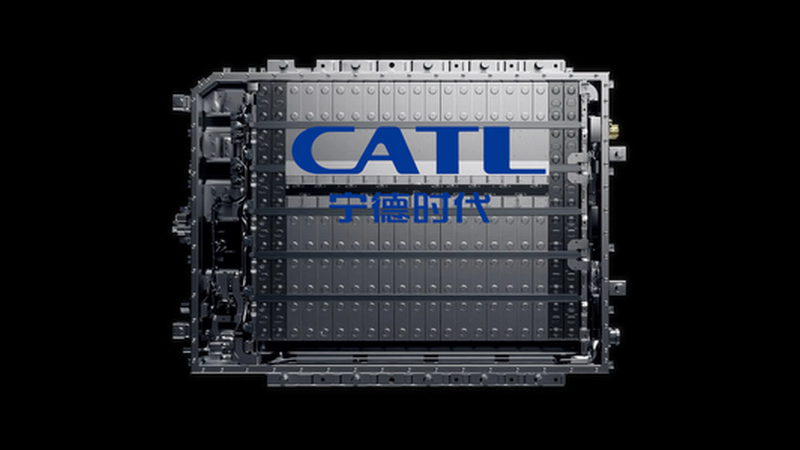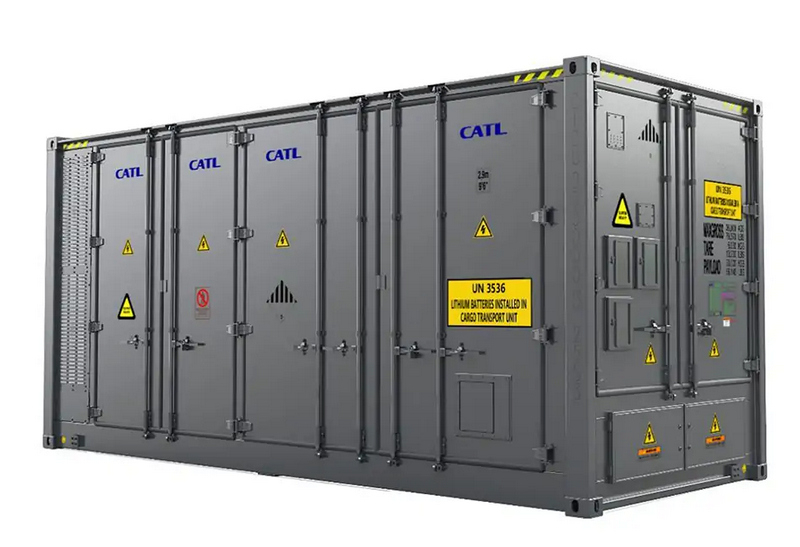CATL now controls 37% of the global market for traction batteries for electric vehicles, but it does not intend to limit itself to it. As company founder Robin Zeng explained in an interview with Reuters, the market capacity for stationary energy storage systems will be ten times larger, and over time CATL will be able to power large data centers and even entire cities from them.

Image source: CATL
Another of the strategic initiatives discussed by the founder of CATL relates to the creation of standard chassis for electric vehicles with increased capacity traction batteries integrated into the power structure of the body. Customers from among automakers will simply create their bodies and interiors based on such a universal platform. Such unification will reduce the cost of developing a new electric vehicle model from billions to millions of US dollars. This will help new players enter the electric vehicle market.
Last year, CATL sold $40 billion worth of electric vehicle traction batteries, up from $33 billion a year earlier. If the market for stationary electricity storage systems turns out to be ten times more capacious, then CATL will proportionally increase its revenue due to its development. CATL’s stationary battery sales grew 33% last year, outpacing its EV battery business.
CATL would like to try its hand at the power generation market. At the same time, the company is going to create electricity storage systems capable of powering a large mining enterprise or an entire city. At the same time, CATL intends to cooperate with manufacturers of generating equipment for wind and solar power plants. Demand from data center operators for green energy is now very high, as explained by the founder of CATL. They have the money to achieve the goal, but lack the appropriate technology.
CATL specialists are currently developing a unified chassis for an electric vehicle capable of covering up to 800 km on a single charge. The battery integrated into the power frame not only increases its capacity due to more efficient placement of battery cells in the body, but also provides higher mechanical strength of the body. With the help of such a platform, the cost of developing a new electric car model can be reduced to $10 million. To ensure business profitability, the manufacturer will only need to sell 10,000 cars a year. This approach will allow the emergence of national automakers in those countries that previously did not have their own auto industry, according to the founder of CATL.

The company has already demonstrated this platform to Porsche, as well as to UAE investors who are interested in creating their own brand of electric vehicles. CATL will not manufacture the machines itself, but will provide many of the required components to customers. Even the body of an electric car can be printed on a three-dimensional printer if necessary.
Issues of expanding battery production outside of China were also discussed during an interview with the head of CATL. In Spain, the company hopes to build a joint venture for the production of traction batteries with the Stellantis concern; a decision on the transaction will be made at the latest in January next year. In Germany, CATL has been operating a similar enterprise for six years, which will break even next year. A new European CATL facility is to be built in Hungary and will break even in 2026. It will be larger than the German one, and therefore will allow for a greater reduction in the cost of localized products.
As Robin Zeng noted, the Chinese auto industry in the production of electric vehicles has overtaken the European one in development, and instead of raising tariffs, local companies could simply learn from the Chinese and adopt experience. The head of CATL named cooperation with this company of the transnational concern Stellantis as an example of a successful solution to the problem with tariffs. As a shareholder of the Chinese Leapmotor, he will be able to assemble more affordable electric vehicles for the local market in Europe.
By controlling the production of lithium compounds needed in the production of traction batteries, CATL tries to balance the interests of battery manufacturers and mining companies, without driving the price of raw materials too low. The company even suspended construction of a large lithium mining complex in southern China in September this year, not wanting to face a further drop in prices for raw materials after its commissioning.
The head of CATL simultaneously urged not to pin too much hope on solid-state batteries. Of CATL’s roughly 20,000 R&D staff, only 1,000 work on solid-state battery issues. Limited distribution of the profile technology will begin no earlier than 2027. According to the head of the company, sodium-ion batteries have brighter market prospects. With their help, CATL hopes to replace up to half of the supply of LFP batteries, of which it is now the leader in production. Sodium is a more common and inexpensive element, and in batteries it is also safer from the point of view of the risk of ignition. CATL is already combining lithium-ion and sodium-ion cells in its advanced traction batteries.